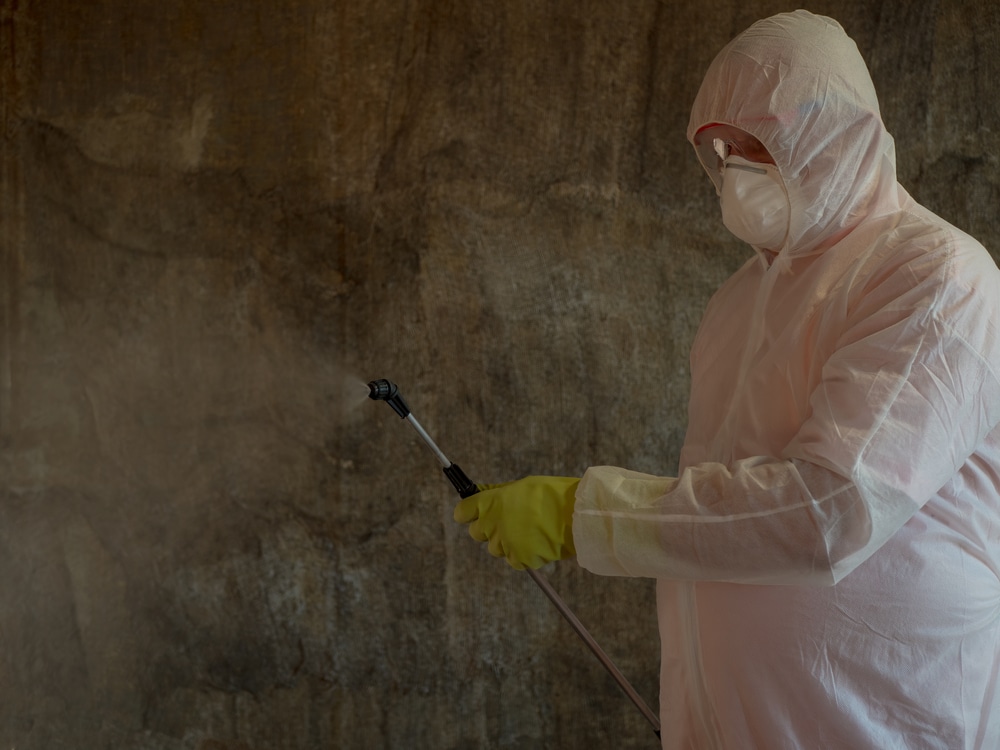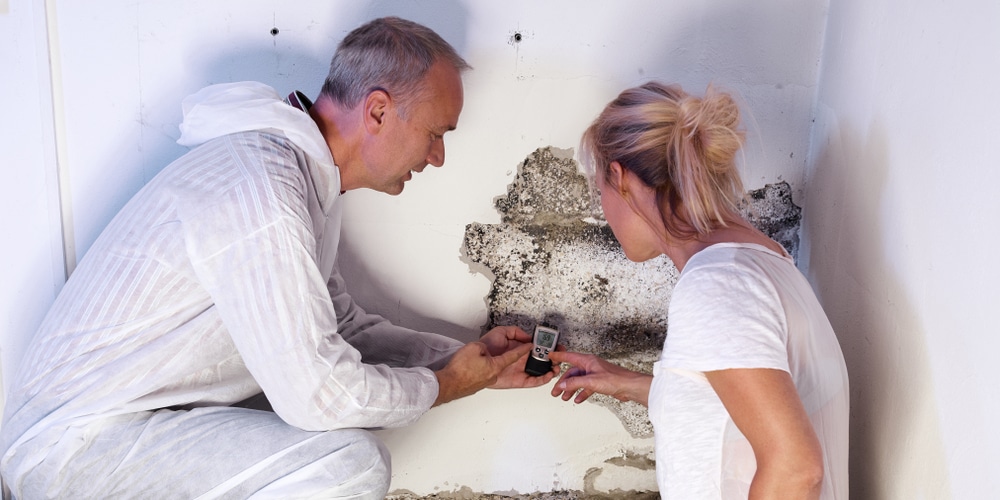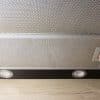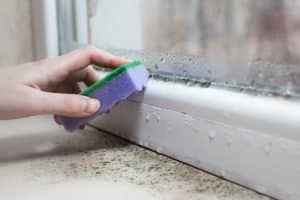How to Prevent Mould in House UK
Preventing mould from appearing in your home is an often overlooked and underestimated part of maintaining a safe, comfortable and healthy home. Mould can be dangerous to anyone under enough exposure.
Even if you have no mould in your house at all, it is paramount that you know what methods to use to prevent the possibility of it from occurring at all.
That’s’s why, in this blog, we will show you how to prevent mould in the house in the UK.
With new buildings being made to be as energy efficient as possible, and the UK aiming for 95% of its electricity usage to be low carbon by 2030, it is imperative to understand how we can make the most of our ventilation. This is where heat recovery ventilation units come in.
To prevent mould, fresh air should constantly be introduced into your dwelling daily, as it helps to regulate temperature and reduce condensation. Introducing fresh air can be as simple as having a ventilation routine, or installing extractors or MVHR units. Almost all of this is facilitated by ducting.
Why mould should not be in your house

Mould should not be anywhere in your home. It has the potential to spread, and if you have a mould allergy, you can experience a host of symptoms that could end up being serious issues for you.
Aside from the issues it can cause you, it can alter the atmosphere of your home, or the room it is in, making it feel humid. In addition, mould has a specific unpleasant smell, and depending on its intensity, can be slimy.
Furthermore, mould can permanently stain wallpaper, and damage drywall. Having mould damaged drywall in your home can also result in the house’s structure becoming unsafe. These are the key reasons, amongst a host of others, as to why mould should not be in your house.
Common types of mould in your house
When it comes to mould in your home, there are two strains that you are more likely to encounter than others. They are…
- Black Mould – Also called Stachybotrys chartarum. Black mould is commonly found in bathrooms and wet rooms, but can also occur on cold exterior walls in habitable rooms such as the bedroom or living room.
- Cladosporium – Commonly found in bathrooms, under sinks, and around taps, but it can grow on surfaces like carpets, furniture, walls, and floors.
Mould reproduces from tiny spores. The spores float through the air and deposit on the surfaces. Under adequate temperature, moisture, and nutrient conditions, the spores can form new mould colonies.
Common areas that mould can grow in
Mould has the potential to grow in any room, but the more common instances of mould growth appears in rooms that are subject to condensation caused by steam. Which is common in bathrooms and kitchens.
Anytime steam catches onto a cold surface, condensation forms. If there is no ventilation and no cleaning of the condensation, you are unintentionally developing the perfect environment for mould to grow.
Can mould grow in a bedroom?
Yes, mould can grow in a bedroom. This can be due to factors such as…
- Poor insulation due to old or damaged windows.
- Little to no efforts in ventilation.
- If there are any unsealed openings to the outside, that has potential to develop mould.
- Leaking pipes can create an unyielding damp spot that can grow mould if left untreated.
- Damage to roofing tiles or clogged gutters can contribute to mould growing from your ceiling.
- En-suite bathrooms can greatly contribute to a bedroom developing mould, if the window is left closed, allowing steam to escape into the bedroom.
How to prevent mould in house UK

When it comes to mould prevention, there is one key word that is the remedy for a majority of mould related problems. That word is ventilation.
Ventilation in the home can come in simple, and complex forms.
Simple forms of ventilation include opening the windows of your home, creating a draft that channels in fresh air, and expels the built-up air that could be housing harmful humidity.
Complicated forms of ventilation include extractor fans and MVHR systems.
Extractor fans provide a simple function of extracting humid air from indoors and expelling it outside. This is especially helpful in conjunction with opening a window. Extractor fans are commonly found in bathrooms and kitchens, and some utility rooms.
MVHR systems share a part of the same function as an extractor fan, by extracting the humid air from indoors. The difference is that MVHR systems also replace the indoor air, with fresh filtered air from outside, without any loss of heat.
Steps on how to prevent mould in the house
Here are some very simple steps you can take to prevent mould in the house.
- When you’re taking a hot shower, make sure your window is open during, and around at least 30 minutes after your shower. If you have an extractor fan, make sure this is on to make the process more efficient.
- When cooking a hot meal, especially if it takes a few hours, use your cooker hood to extract any steam or heat, you should also have a window open.
- Upon waking up, open the windows of your bedroom, and the windows of any other resident for around 10/15 minutes, especially if the room door is closed during the night.
- Depending on the level of humidity in your home, you should open all the windows in your home for around 20 minutes at least once a day. If the humidity in your home is severe, it should be done more often. The channels of air that are created from the open windows allows for a greater reduction in humidity.
- Buy a hygrometer to keep on track of humidity levels of rooms that require an extra level of maintenance.
- Seek to resolve any issues that can contribute to mould growth. For example, leaking pipes, blocked gutters, unsealed holes from outside.
- Wipe down condensation with a dry towel upon noticing it.
- If you haven’t already, install extractor fans and/or MVHR systems.
How to remove mould if it’s in your house

If you have unfortunately found mould developing in your home, using a mould surface cleaner, followed by an anti-mould paint is an extremely effective method in removing mould on a surface, and preventing its return for some time.
This can be helpful in instances in which there is an issue causing the mould, such as a leaking pipe, that can not be resolved the same day. Regardless, if you are aware of the cause of mould in your home, you should seek to rectify it immediately. Delaying this can allow the mould to spread through your home.
Invest in mould control solutions today
At I-Sells, all things ventilation and ducting related is our speciality, we are here to answer the questions we know are common for those new to HVAC and what it encompasses.
We at I-Sells endeavour to ensure our customers have all the information they require before investing in our mould solutions. Be sure to visit our blog page to learn about the vast array of factors and issues surrounding ventilation, mould, condensation, and much more.
We hope to have shown you how to prevent mould in a house in the UK.
We understand you may have more questions, do not hesitate to contact us for more information about whatever you need our help with. If you’d like to email us, click here. For other contact options, see below:
Call us on 020 8463 9696
Visit us at our showroom:
*OPENING TIMES*
Monday – Friday: 8:00 am to 5:30 pm
Saturday: 9:00 am to 12:00 pm
Sunday: Closed
15 St John’s Parade
Sidcup, Kent
DA14 6ES
United Kingdom





























Add comment
You must be logged in to post a comment.